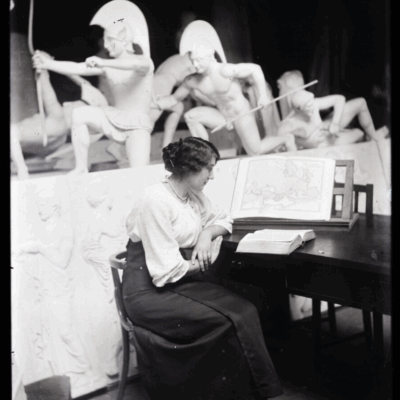
EFHA World 14.10.2025
10.07.2018
fashion historyFrench fashionrevivalism
what did Yves Saint Laurent do with the past?
The relationship fashion has with its past is quite complex. The past can either be a prison to flee away from or a jar where to find atmospheres, shapes, vibes. We are taught that, when past is the declared source of inspiration, we are talking about a ‘revival’. The dynamics of revival seem plain: revival means taking a period and rethinking it, reconsidering it with a different awareness, that of the present, and actually remaking its objects with the memory of the mould.
The first ‘revival’ collection was actually thought for people who ‘did not have memories’, and was developed by one of the designers whose name is related with avant-garde: Yves Saint Laurent. In 1971, Yves Saint Laurent presented his ‘Liberation’ collection, also called ‘Forties’, for the evident reprise of themes and variations of the war years. The collection was defined ‘hideous’ by the press, because it was a ‘sad reminder’ of a period of restriction.
France felt betrayed by the elected heir of the grand couturiers. Saint Laurent himself compared the clash he provoked with the ‘scandal’ of Manet’s ‘Olympia’, finding himself both ‘sad’ and ‘delighted’ by the results of what he considered a rebellion to the static nature of Haute Couture. ‘L’important, c’est que les filles jeunes qui, elles, n’ont jamais connu cette mode, aient envie de la porter,’ he declared.
Maybe pushed both by the ‘revival craze’ fashion is experiencing in these days and the general lack of novelty in fashion, in 2015 the Fondation Yves Saint Laurent Pierre Bergé and curator Olivier Saillard decided to put on stage the infamous ‘Liberation’ collection. The set, designed by Nathalie Crinière briought the audience inside the laboratory of the couturier, with clothes, sketches, fabric choices and the whole line up of the eighty-pieces collection, printed human-scale on the walls, and then moves through the many pages of newspapers which strongly criticised the collection. The exhibition came in a moment when scandal was no longer a scandalous word. For Saint Laurent, revival meant provocation, a ‘historical exercise’, useful to convey a brand-new message.